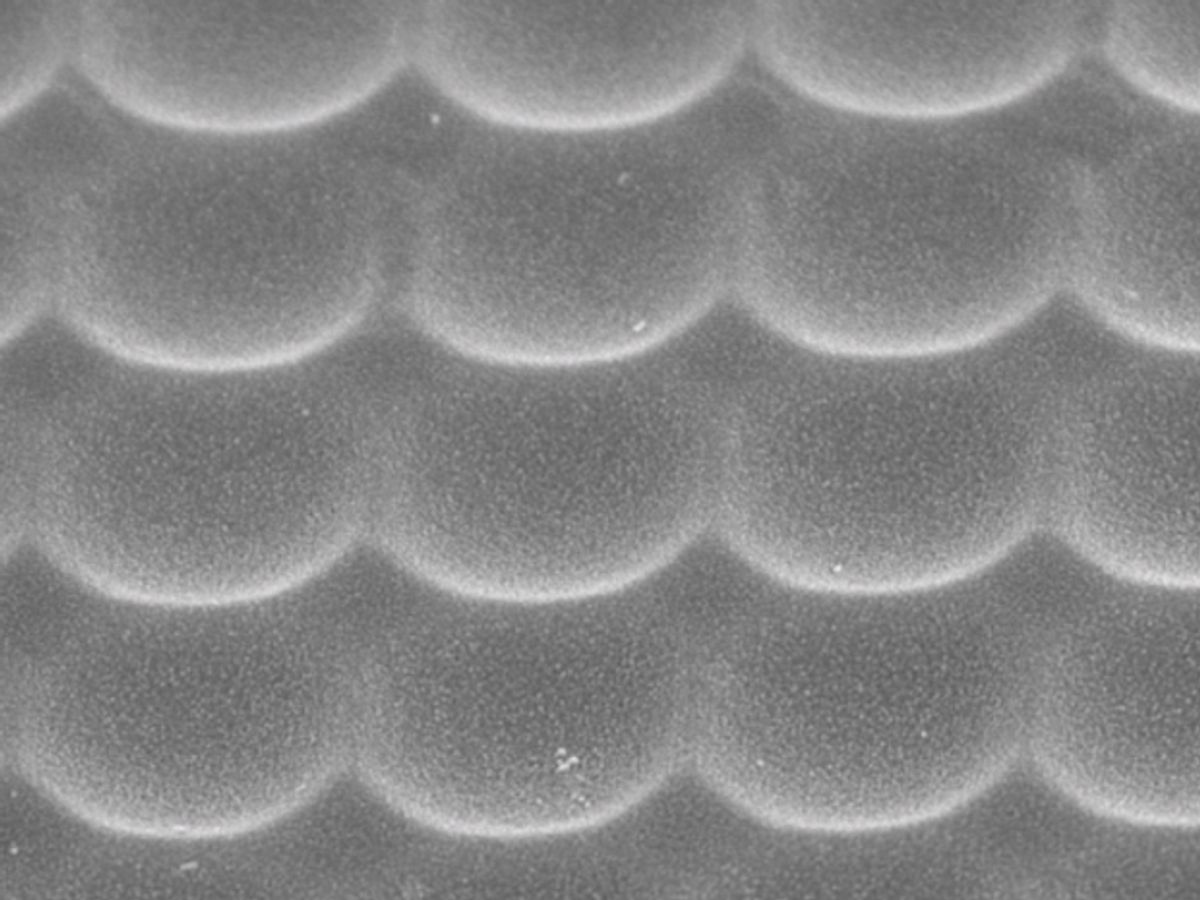Solar-concentrator technology has long held out promise as a way to increase the conversion efficiency of photovoltaics.
Now researchers at the Hong Kong University of Science and Technology (HKUST) have tackled the tricky issue of creating a solar concentrator for an organic photovoltaic (OPV) by developing a novel “nanobowl” optical concentrator fabricated on low-price aluminum foil.
Most OPV devices are based on a design that includes a glass substrate with indium tin oxide (ITO) electrodes. But there are a number of problems with this design, most notably that the solar cells are not flexible and that the ITO electrode compromises the OPV’s performance.
Aluminum foil substrates have the advantages of excellent conductivity, flexibility, inexpensiveness, and roll-to-roll manufacturing. But it is more difficult to get a uniform organic semiconductor “active layer” on aluminum foil’s textured surface than on the smooth surface of a glass substrate.
In work published in the journal Science Bulletin, the Hong Kong researchers were able to overcome this obstacle by incorporating nanobowl optical concentrators on the aluminum foil using a chemical process. The nanobowl optical concentrators improve the optical absorption in the active layer of the OPV despite the textured surface of the aluminum foil. Simulation studies carried out by the researchers revealed that such improvement was the result of the superior photon capturing capability of the nanobowls.
The nanobowl optical concentrator OPV demonstrated a more than 28-percent enhancement in power conversion efficiency versus devices without a nanobowl, the researchers claim. This 28-percent increase still only brings the nanobowl solar cell to an energy conversion efficiency of 3.12 percent, well below the 8.4-percent conversion efficiency record for OPVs reached last year.
Despite this comparatively low conversion efficiency, the promise of this latest research is that it shows a way forward in the development of geometrical light trapping with low-cost, chemical-based processes for manufacturing OPVs.
Dexter Johnson is a contributing editor at IEEE Spectrum, with a focus on nanotechnology.



